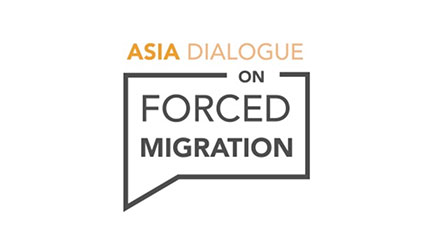Perhaps more important than ‘who gets what’ is ‘what gets given’ in the first Ministry of Julia Gillard’s new government. Eva Cox considers what some of the changes might signal about the new government’s policy priorities, particularly regarding its social agenda.
What does the new Ministerial line up tell us about the priorities of the Government?
If you assume that the allocation of portfolios and the interrelations between these are useful indicators of where the government is putting its priorities, the results are confusing. I have done a rough tally of who will be working with whom on what and the results suggest some considerable biases towards some policy areas and the neglect of others.
The above table shows the areas of Cabinet Minister interests, their associated other ministers and allocated parliamentary secretaries whose roles are not clear. The whole of government emphasis is made clear in these allocations by grouping the portfolios into broad areas. There are five areas that are primarily economic, dealing with making Australia financially productive. There are four portfolios that combine environmental issues with economic ones, four looking at productivity, including education to find people jobs and one looking for workers. That’s most of the Cabinet and leaves two that are involved in law and order and two that do the traditional services of health and welfare. The word Education was not part of the original announcement, perhaps reflecting its redefinition as a concept more clearly understood as getting people ready for jobs. However, since the original announcement ‘tertiary education’ has been re-instated in the job title for Chris Evans. Nevertheless, the overall balance suggests this is not a government that has any serious social improvement intentions, except maybe getting more people into paid work. Other telling omissions from the original announcement which have subsequently been revised were in the areas of Women, Indigenous Health and Research.
What is interesting is the omissions and sometimes the placement of particular issues. I have noted elsewhere that there was no mention of a Minister for Women in the original media release, and a ‘correction’ was issued later. Kate Ellis, a more junior Minister than Tanya Plibersek, was belatedly announced as Minister. She also has responsibility for employment participation and child care, which suggests maybe moving more women into paid work will be the main interest. However, as Ellis’ other responsibilities do not fit the FaHCSIA cabinet portfolio (where the Office for Women is located), who will be the cabinet representative? Child Care is now the responsibility of Peter Garrett and Employment Participation will be under Chris Evans.
The issue of Women is particularly notable given this is the first Ministry of Australia’s first female Prime Minister. As noted above, the current Office for Women is part of FaHCSIA, placed there because John Howard thought it belonged with families. Women’s groups objected to the shift when it happened because women were usually in the PM’s portfolio, maybe with a minister assisting. The placement of the office in a co-ordinating department (PM&C) was seen as crucial because it could then be consulted on and comment on cabinet and budget issues. The move to a line department was seen as diminishing its influence, and it did.
The new Gillard government could take this opportunity to relocate the Office for Women back into the Prime Minister’s portfolio. After all, women are half the voters and regions have many women in them with particular problems. Such a move might also address some of the concerns about the narrowing of women’s issues to their relationship with employment and economic activity.
Bill Shorten did such a good job for Disability he was promoted to a Ministry and the portfolio was seen as no longer necessary. Instead we have a Minister for Mental Health, a welcome addition but not a replacement. Warren Snowdon originally lost Indigenous Health but was hurriedly replaced before the swearing in, and so will be joined, not replaced, by Mark Arbib being given Indigenous Employment. There is no separate Minister for Indigenous issues which creates a real problem for our most needy population group as their needs are not being met. Multiculturalism seems to have been lost completely.
Inequality, welfare or other aspects of disadvantage were badly overlooked in the first ALP Government. It was called social inclusion and was tucked away under Ursula Stephens, who seems to have been dropped, and little was done. It has now risen slightly to Tanya Plibersek, and combined with Centrelink, so she can introduce the savagely unfair income management system that will make the lives of the unemployed and sole parents even more difficult.
Health Care, the supposed big area of reform, seems to be under resourced if it is going to lead changes. There is, as mentioned above, Mark Butler doing badly needed mental health reform but little other assistance, except belatedly in Indigenous Health. Housing as a separate portfolio is gone but Mark Arbib has social housing along with a lot of other issues including sport and Indigenous employment.
The overall picture is not of an exciting new coalition of interests that will change the face of Australian politics. It is avowedly economically oriented, which is not what most would want. The Greens and independents may find that there is little space for those social issues that many of them have raised already. There may need to be some serious rethinking along the lines of what society we want to live in, not just our somewhat inequitable economic well being.
| Ferguson | • Minister for Resources, Energy and Tourism | Sherry tourism |
| Bowen | • Minister for Immigration and Citizenship | |
| Emerson | • Minister for Trade | |
| Combet | • Minister for Climate Change and Energy Efficiency |



